100 Gothic Horror Movies: The Definitive List
From Phantom of the Opera (1925) to Rebecca (1940) to Blood and Roses (1960) to The Others (2001)—this is the only list you’ll need to satisfy all of your gothic horror appetites!
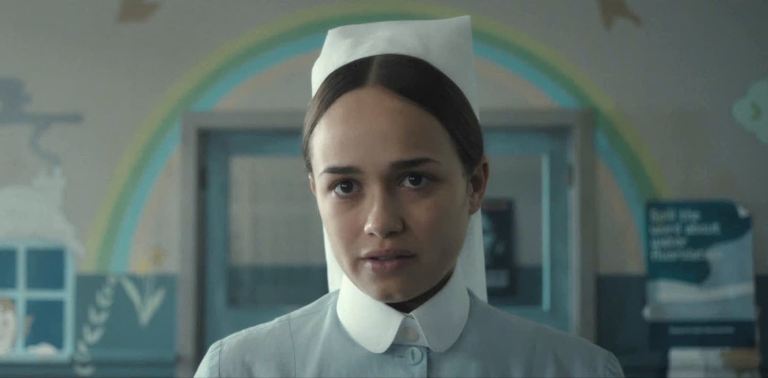
Dating back to the 18th century with Horace Walpole’s 1764 novel The Castle of Otranto, gothic horror has long dominated the genre. On screen, the subgenre has been around since the early days of cinema. 1922’s Nosferatu, the earliest adaptation of Bram Stoker’s 1897 novel Dracula to still exist, revolutionized the vampire and horror itself with its gothic elements. Sheridan Le Fanu’s 1872 novel Carmilla has inspired countless film adaptations. Frankenstein (1931), based on Mary Shelley’s classic novel, is considered one of the greatest horror classics. Other gothic works that would later be tailored for the screen include works by Edgar Allan Poe, Daphne du Maurier, and Shirley Jackson. Gothic horror has its roots in literature, but over the decades the subgenre has broadened and evolved with original stories like Dario Argento’s Suspiria (1977), The Others (2001), and Guillermo del Toro’s The Devil’s Backbone (2001).
What binds gothic horror films together are their dark, increasingly chilling atmosphere—their ability to unsettle the viewer with a sense of unease and gloom. Gothic horror can include, but not be exclusive to, the tangible presence of the supernatural or its mere question, vampires, haunted houses, dark castles, ghosts, inexplicable events, romance, mystery, nightmares becoming a reality, and monsters. The subgenre is more than just thick fog, ghastly cries in the middle of the night, and flickering candlelight. It’s about what lurks in the shadows—the war between humanity and oppressive forces. It not only offers commentary of culture and society, but also delves deep into the dark human psyche. Among themes often explored are loss, longing, sexual repression, madness, grief, revenge, human arrogance, greed, death, decay, gender, and power.
Below you’ll find curated a list of 100 gothic horror movies that encapsulate the aesthetic and essence of the subgenre.
Nosferatu (1922)

Over a century after its initial release, the atmospheric Nosferatu manages to still successfully chill its audiences. After a score of organ music, the audience is introduced to Thomas Hutter (Gustav von Wangenheim) who has been summoned to Transylvania by Count Orlok (Max Schreck) to arrange for his purchase of a house near Hutter’s own in Bremen. What follows is his wife Ellen Hutter’s (Greta Schröder) risk of her life to end a vampire’s plague of death. This silent German expressionist film was directed by F.W. Marnau, and named Nosferatu because it was an unauthorized reworking of Bram Stoker’s novel.
The Robert Eggers revival of the ancient Transylvanian vampire will be released on December 25, 2024, and stars Bill Skarsgärd, Lily-Rose Depp, and Nicholas Hoult.
Phantom of the Opera (1925)

Based on Gaston Leroux’s 1910 novel of the same name, this silent horror film adaptation stars Lon Chaney in his most prominent role as a disfigured genius composer haunting the Paris Opera House who falls in love with the aspiring opera singer Christine Daaé (Mary Philbin). He’ll do anything to guarantee her rise to stardom, even commit murder. What he wants most, however, is to have Christine all to himself. The masked phantom kidnaps her to keep her from being with her fiancé.
Dr. Jekyll and Mr. Hyde (1931)
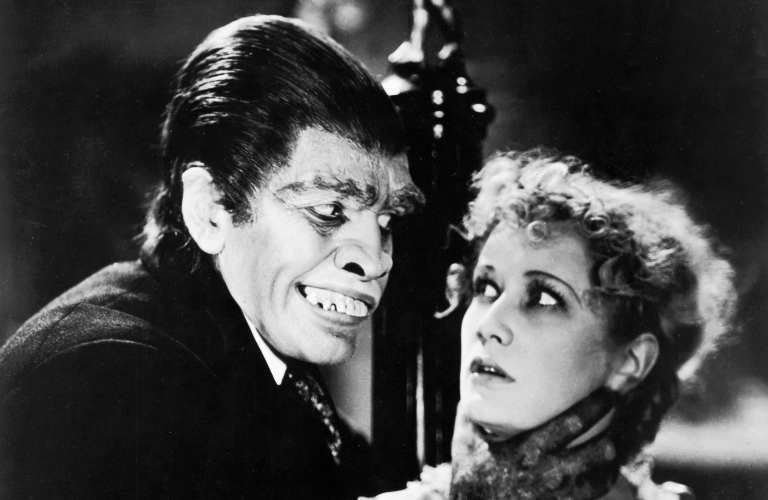
This pre-code horror movie is based on the 1886 gothic literary classic of the same name by Robert Louis Stevenson. Dr. Jekyll creates a potion that separates a man’s good side and his dark side, and subsequently experiments it on himself. He then turns into a savage of a man who commits unspeakable acts. Frederic March starred as the possessed doctor and won the 1932 Academy Award for Best Actor in a Leading Role. This gem was ahead for its era and doesn’t let up in its commentary on toxic masculinity and gender-based violence.
Rebecca (1940)
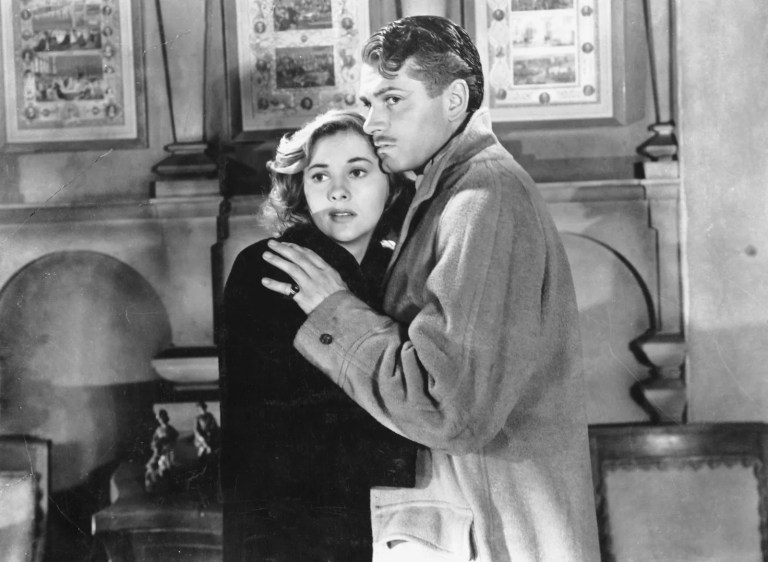
Rebecca is based on the 1938 Daphne du Maurier gothic novel of the same name and is directed by Alfred Hitchcock. It’s considered one of the director’s greatest works. A young woman (Joan Fontaine) meets the rich and charismatic widower Maxim de Winter (Laurence Olivier) and falls in love. After marrying, she moves to his ancestral mansion Manderley and learns that his late wife not only haunts the home, but also her brooding husband. Maxim becomes increasingly emotionally distant. The film won two Academy Awards that year, one for Best Picture and another for Best Cinematography.
Cat People (1942)

Irena (Simone Simon), a strange and lonely Serbian fashion illustrator living in New York City, believes that an ancient curse will transform her into a feline predator if aroused. It causes tension in her new marriage to disbelieving husband Oliver (Kent Smith). This horror is effective in creating an increasingly chilling atmosphere. Its power lies in its ability to spark the viewer’s imagination. The film has long been hailed by the LGBTQ+ community, with Irena being one of the most essential queer-coded monsters in horror movie history. Tomamoter-approved critic Juan Barquin said, “It’s a film that prioritizes what exists in the shadows, both visually and metaphorically, with queerness that is never explicitly stated but flat-out obvious to any viewer who understands what it’s like to resist (and then give into) your true desires.”
The Uninvited (1944)
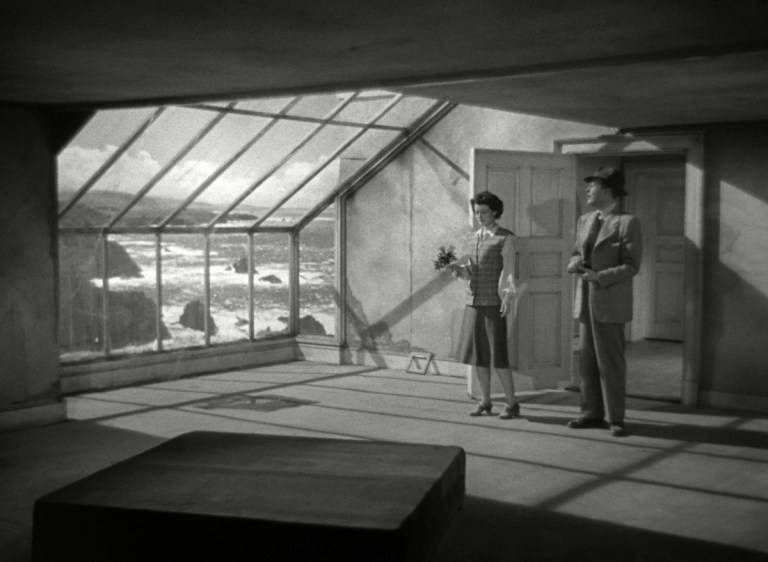
The Uninvited is a ghost story set in a beautiful, gothic home on the English coast that has been abandoned for many years. Fitzgerald siblings, played by Ruth Hussey and Ray Milland, purchase the cliff-top house, only to discover that it comes with a haunted price. Loaded with atmosphere, the story has a slow-burn pace that allows the tension to build gradually. A tragic family past, a mysteriously locked room, terrifying silence pierced by wails in the night, cold chills, inexplicably fading lights, and full-on dread—this movie has all the elements that encompass a successful gothic horror. It currently holds a 95% critic score on Rotten Tomatoes.
The Spiral Staircase (1946)
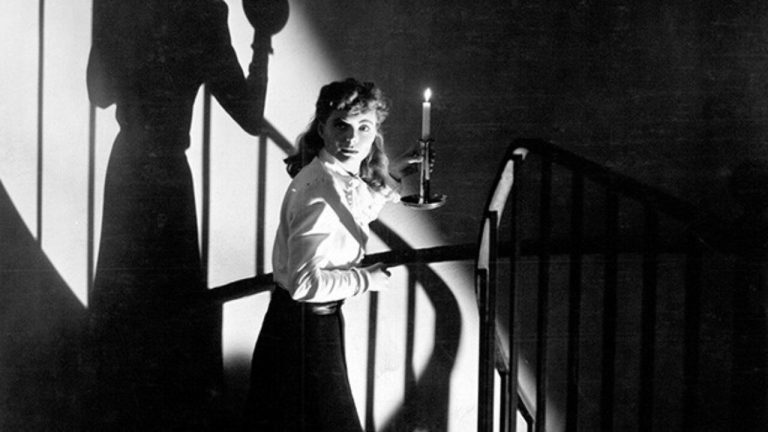
A large Gothic mansion in 1906 Vermont provides the setting in The Spiral Staircase—and numerous places for a killer to hide. Blending gothic horror and film noir, the story sees Helen (Dorothy McGuire), who is mute, be terrorized by a loose maniac targeting young women with disabilities. The protagonist seems to be the likely next victim, and she begins to suspect more and more that each of the house’s residents could be the possible culprit. The film is renowned as one of the greatest “old dark house” horrors.
The Hounds of the Baskervilles (1959)
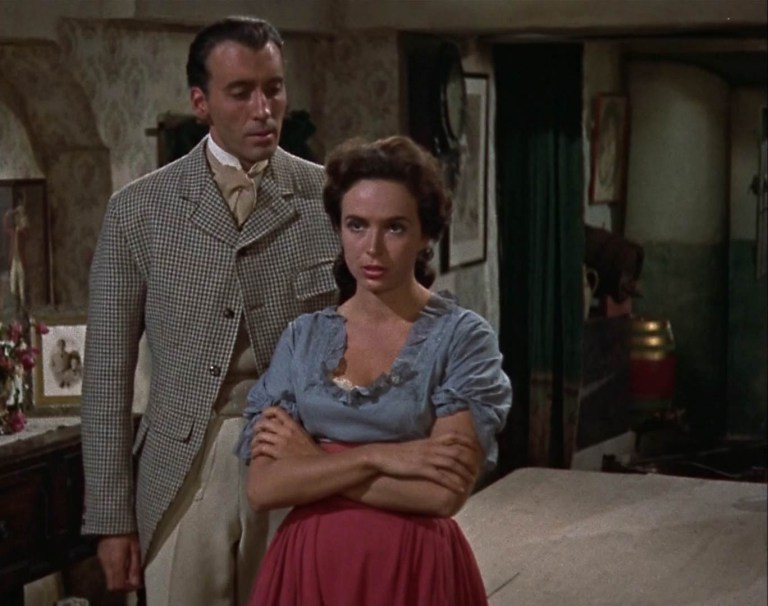
A Hammer Horror film, The Hounds of the Baskervilles preserves a dark and gothic feel to this day. This mystery is an adaptation of Sir Arthur Conan Doyle’s 1902 novel of the same name. It stars Peter Cushing as Sherlock Holmes on a quest to solve the mystery of an ancient hound who is supposedly killing off a family of nobility on the moors of Southwestern England. The movie holds a 94% critic approval rating on Rotten Tomatoes.
The Innocents (1961)
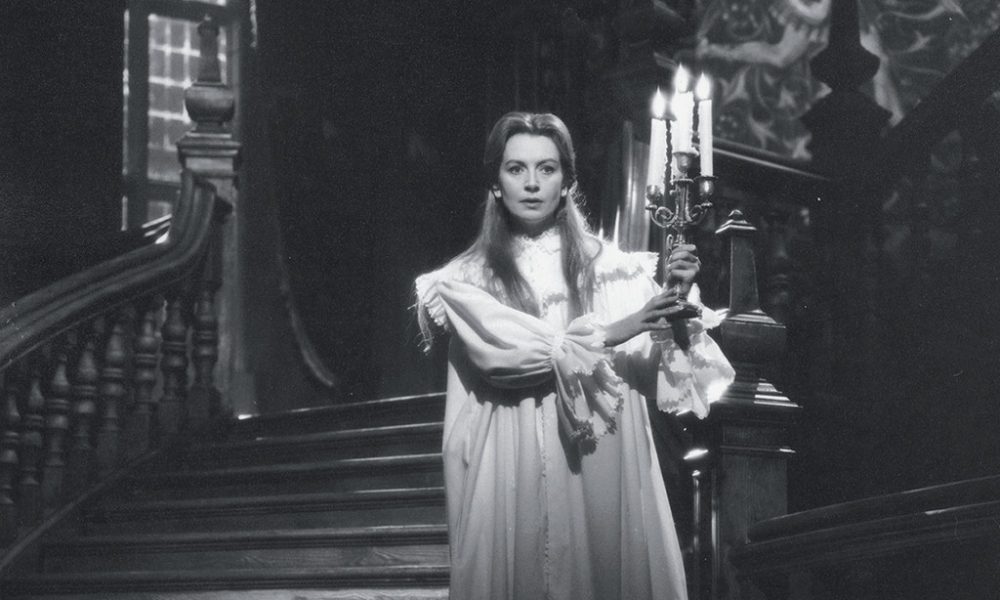
Based on Henry James’s 1898 novella Turn of the Screw, this adaptation stars Deborah Kerr as Miss Giddens in a haunting and unforgettable performance. Kerr herself called it the finest performance of her career. Caring for two unnervingly precocious siblings in a Victorian home in the country, the young governess begins to suspect that something is amiss with her new charges. After seeing the vengeful ghosts of the former governess and valet, she becomes convinced that they are trying to possess the children. Truman Capote, who wrote the screenplay, also considered it his best work and won a 1962 Edgar Allan Poe Award for Best Motion Picture Screenplay.
The Masque of the Red Death (1964)
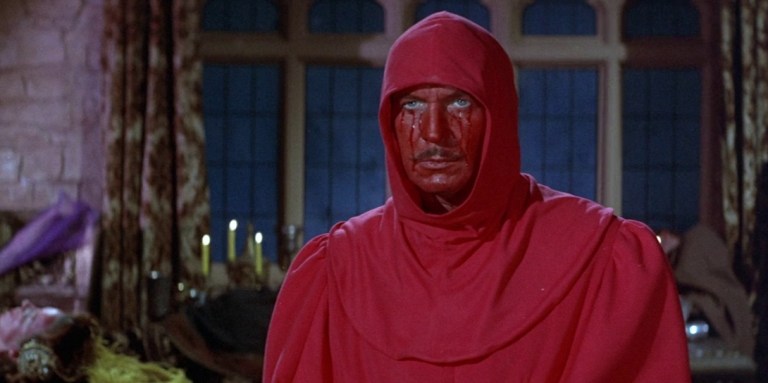
Adapted from Edgar Allan Poe’s short story, The Masque of the Red Death is a quintessential gothic horror that succeeds in capturing the essence of Poe’s work. Vincent Price stars as the sadistic Prince Prospero living in medieval Italy. After a despicable and violent act to ward off the Red Death, a plague that makes its victims bleed from every pore, the wicked tyrant hosts a hedonistic masquerade ball and invites other nobles in the area.
Even the Wind Is Afraid (1967)
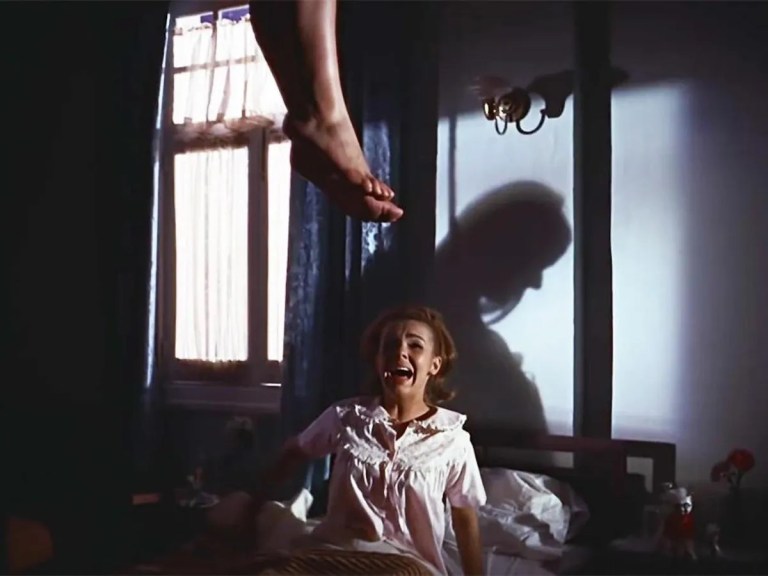
This Mexican gothic horror, better known as Hasta el viento tiene miedo, was written and directed by the brilliant Carlos Enrique Taboada. To this day the film is regarded as one of the most superb Mexican horror movies. Claudia (Alicia Bonet) is punished along with her dormmates and forced to spend spring break at their all-girls boarding school after trying to investigate a haunting in their prep’s towers. She felt motivated by recurring dreams of a body hanging from the building. Each night the wind calls out to her, whispering her name. Trapped under the strict eye and iron-fist of Headmistress Bernarda (Marga López) the girls try to solve the mystery of the vengeful spirit. The movie was made during the rise of El Movimiento Estudiantil (The Student Movement) in Mexico, a coalition of students who garnered extensive support for political change in 1960s authoritarian Mexico. For one familiar with the movement, the parallels are beautifully woven in.
The Blood Spattered Bride (1972)
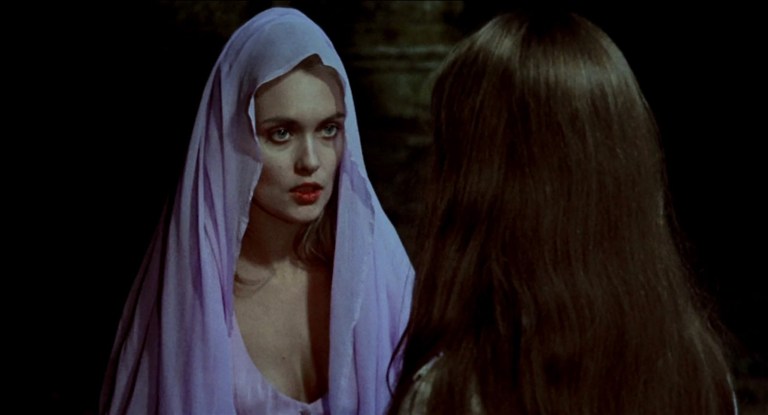
The Blood Spattered is a little bit gothic and a little bit giallo. It’s a Spanish horror movie loosely inspired by Joseph Sheridan Le Fanu’s 1872 novella of the same name. It may have been controversial upon its release for its sexual content, but today it’s regarded as one of the best vampire films ever made. This atmospheric movie tells the story of newlywed Susan (Maribel Martín) who moves in with her husband into his ancestral mansion. She begins having dreams of his ancestor Mircala Karstein (Alexandra Bastedo), a woman who murdered her groom on their wedding night. Susan, sexually repulsed by her husband, begins to grow more detached. Soon her dreams become reality.
Symptoms (1974)

Symptoms is an obscure psychological gothic horror from Britain that discombobulates all the senses. Dreamlike in nature, it holds a 100% critic score on Rotten Tomatoes. A reclusive young woman Helen (Angela Pleasence) invites her friend Anne (Laura Heilbron) to stay with her in her English country mansion. Helen’s emotional state begins to decline, but is she who she portrays to be? The movie has lesbian undertones, mostly as it relates to Helen’s mania. Although highly praised, some fans have brought it under scrutiny for its equating lesbianism to a symptom of mental illness, while others think it’s handled in a sensitive manner. No matter how you feel after watching, it’s a film you won’t be able to tear your eyes from.
Darker Than Night (1975)

Also known as Blacker Than the Night or Mas negro que la noche, Darker Than Night is another gothic gem by Carlos Enrique Taboada. Whereas Even the Wind Is Afraid celebrates the rebellion of youth, Darker Than Night reminds that youth to uphold the long held cultural expectation of respecting their elders. It lacks the complexity of his other films, but it still makes for an excellent ghost story. Ofelia (Claudia Islas) inherits an old gothic mansion from her aunt with the stipulation that she look over the deceased woman’s beloved black cat, Bécquer. She invites three of her girlfriends to move in with her. Soon after, they begin to hear strange noises and witness bizarre occurrences in the house. The girls start to be picked off one by one.
The Picnic At Hanging Rock (1975)
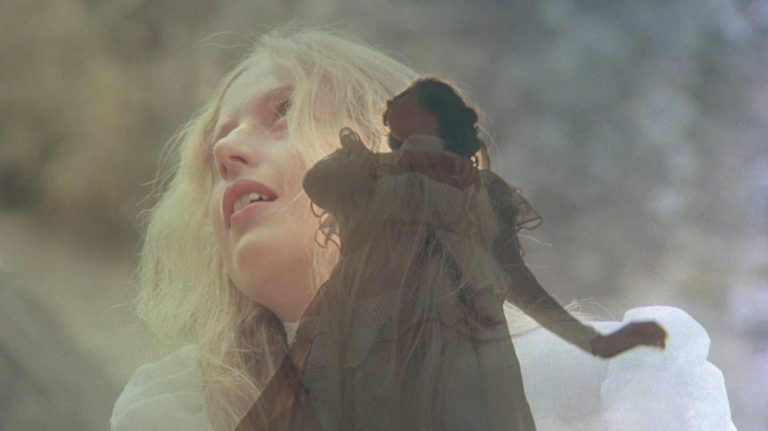
This Australian film is a surreal gothic fever dream and eerily atmospheric—a must watch, if you haven’t yet experienced it. It’s directed by Peter Weir, known for Dead Poets Society (1989) and the Truman Show (1998), and based on Joan Lindsay’s 1967 novel of the same name. The movie focuses on an all-girls boarding school in the 1900s. One Valentine’s day a group of students, along with a couple of teachers, go have a picnic near scenic Hanging Rock, an unusual volcanic formation. A few of them sneak away to explore and fall into a trance in the maze-like tunnels. They never make it back, and neither does their math teacher. Don’t go into this one thinking you’ll get a neatly tied mystery. Leaving you with more questions than answers is what makes this unsettling film so powerful.
Full Circle (1977)
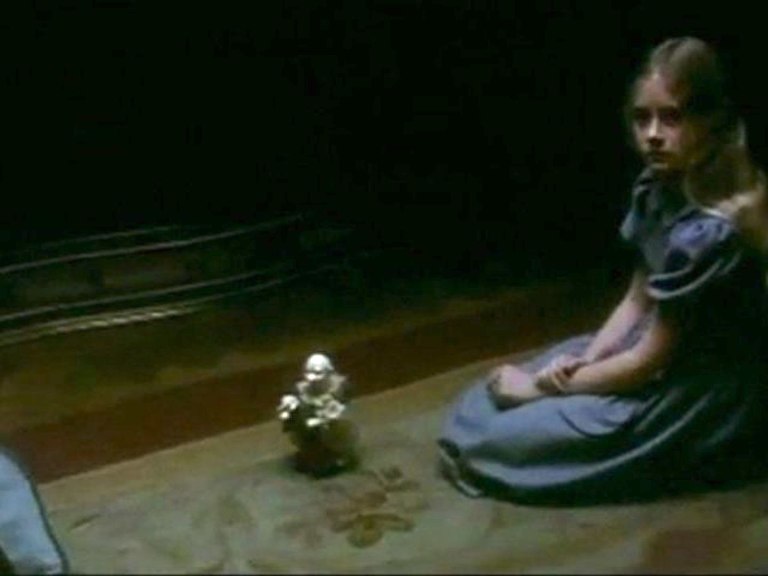
Released in the United States as The Haunting of Julia, this underrated gem is based on the 1975 novel Julia by Peter Straub and maintains a faithful adaptation. Mia Farrow stars as Julia Lofting, a wealthy housewife who leaves her husband and moves into a Victorian house after the death of their daughter. While mourning her own child, she soon finds herself haunted by the ghosts of other children. The film is a hazy supernatural horror that touches on motherhood, loss, and longing.
The Changeling (1980)
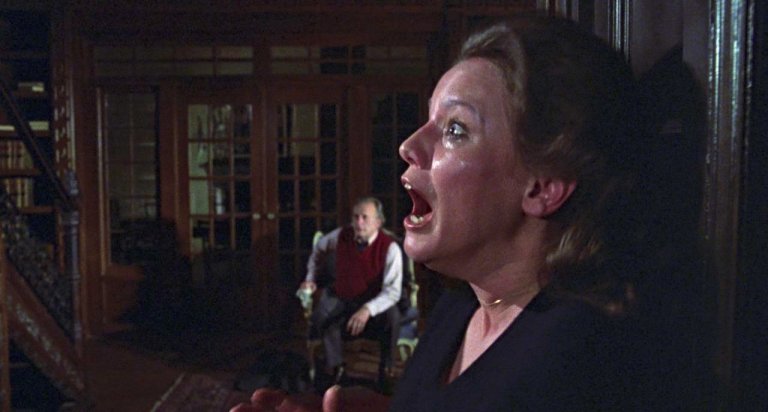
The Changeling is a gothic horror with a compelling plot, excellent cinematography, and a phenomenal musical score. It’s a ghost story, a whodunnit, and follows the gothic haunted house tradition all at once. A music professor, John Russell (George C. Scott), loses his wife and daughter in a car accident and moves into a creepy and long abandoned mansion to build a new life. Soon after moving in, he begins to see the ghost of a little boy who drowned in a bathtub inside the house.
Haunted (1995)

Haunted is a loose adaptation of James Herbert’s 1988 novel. Haunted by his twin sister’s death in childhood, Oxford Professor David Ash (Aidan Quinn) dedicates his life to debunking psychic phenomena. He’s called to Eldbrook to investigate the house’s mysterious occurrences. A group of adult siblings have called him to look into their old nanny’s claims of ghosts. There, Ash develops a romance with the sister Christina (Kate Beckinsale)—he also finds so much that he cannot explain and begins to question his own beliefs. Haunted is another example of phenomenal atmospheric horror. Be warned that it’s a tragic story—one that leaves the viewer feeling oppressively empty.
The Devil’s Backbone (2001)
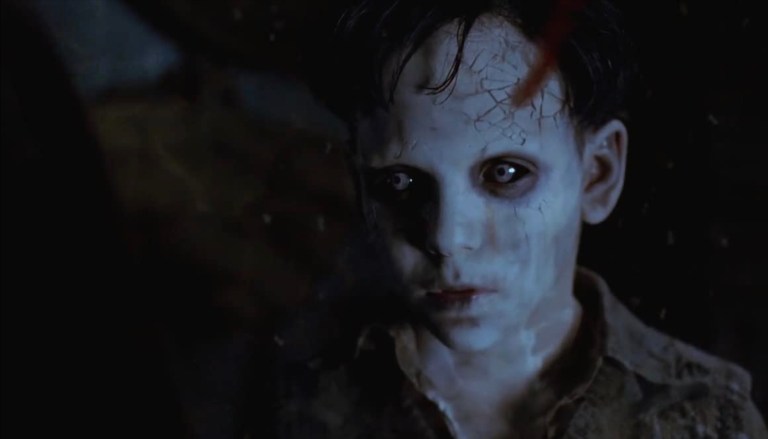
The Devil’s Backbone is one of the most gutting entries on this list, and arguably the best of Guillermo del Toro’s work. The movie is part of the Criterion Collection and holds a 93% critic score on Rotten Tomatoes. A.O. Scott wrote for The New York Times: “The director, Guillermo del Toro, balances dread with tenderness, and refracts the terror and sadness of the time through the eyes of a young boy, who only half-understands what he is witnessing.” The story focuses on the Santa Lucía Orphanage during the last days of the Spanish Civil War.12-year-old Carlos (Fernando Tielve) arrives one day and shortly discovers that the orphanage is haunted. After making contact with the ghost of Santi, he begins to unravel the mystery behind his death.
A Tale of Two Sisters (2003)
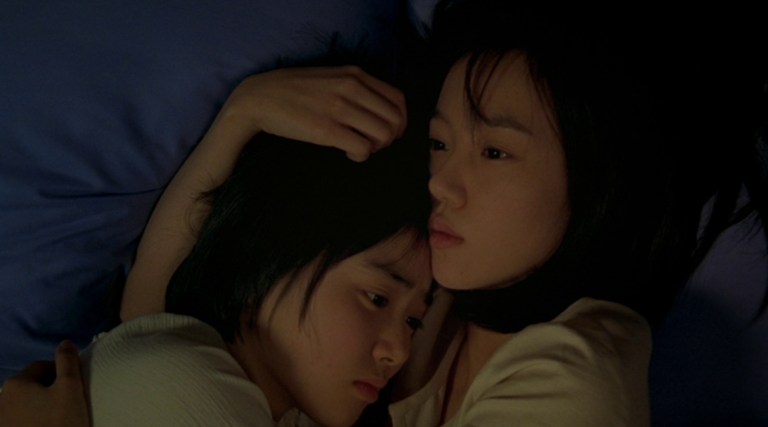
A Tale of Two Sisters is a South Korean melancholy coming-of-age horror reminiscent of a gothic fairytale. It focuses on a family with a dark history. Two sisters who have a strained relationship with their stepmother become reunited after one has recently been released from a mental institution. Upon returning to her family’s secluded estate, both sisters begin to experience a string of hauntings. The older recently released sister begins to suspect their stepmother of sinister things. An American remake was released in 2009 as The Uninvited, though much of its story was changed and it strongly pales in comparison to the original.
The Handmaiden (2016)
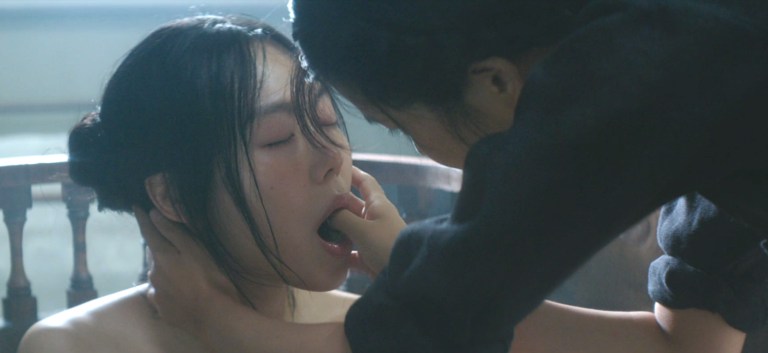
The Handmaiden is a South Korean gothic psychodrama set in 1930s Japanese-occupied Korea. The movie has a myriad of twists and turns, so do yourself a favor and avoid any spoilers online before watching. The main gist: A swindler “count” hires a young woman to be a handmaiden to a Japanese heiress and enlists her in his plan of defrauding her and stealing her fortune. The film holds a 96% critic score on Rotten Tomatoes.
Marrowbone (2017)

Marrowbone is an underrated English-language psychological horror from Spain written by The Orphanage’s (see below) Sergo G. Sánchez. Among its excellent cast are Mia Goth, Anya Taylor-Joy, George MacKay, and Charlie Heaton. A mother and her four children escape England to her childhood home in Maine, the Marrowbone Residence. Soon she becomes bedridden and terminally ill. Upon her passing, the siblings are forced to keep her death a secret until the oldest brother turns 21, in order for them to stay together until he can obtain legal guardianship. As they struggle to keep their secret from the town lawyer, they find themselves plagued by a presence in their home.
The Banishing (2020)

The Banishing is a British haunted house horror set right before the start of WWII in 1935 England. It stars Jessica Brown Findlay as Marianne Forster, a young mother newly married to vicar Linus Forster (John Heffernan) and forced to carry on the facade that her daughter is her niece. The family moves into Marley Hall and slowly come to learn that their new home and Marianne begins to uncover its sinister secret.
More gothic horror movies:
The Cabinet of Doctor Caligari (1920) a German silent expressionist film and psychological gothic horror famous for its revolutionary visual style. The story is centered around a hypnotist who uses a brainwashed sleepwalker for murder.
Frankenstein (1931) an adaptation of Mary Shelley’s 1818 gothic novel of the same name directed by the legendary James Whale.
The Old Dark House (1932) In another masterpiece by director James Whale, a dark and stormy night in the Welsh mountains sees a group of travelers take shelter inside an isolated mansion full of dark and dangerous oddities.
Vampyr (1932) a Danish horror, now part of the Criterion Collection, about a student of the occult who encounters a sinister force when he seeks shelter at a village inn.
Bride of Frankenstein (1935) Dr. Frankenstein (Colin Clive) and Dr. Pretorius (Ernest Thesiger) build a bride for The Monster.
Gaslight (1944) a gothic horror that blends mystery, romance, and atmosphere. A newlywed young woman fears for her sanity when strange things begin to occur at the family’s mansion.
Dragonwyck (1946) a gothic romance set in upstate New York that tells the story of a young girl, Miranda Wells (Gene Tierney), who is sent to be the governess to an aristocratic and distant relative’s young daughter.
Diabolique (1955) a French psychological horror-thriller centered around a wife and mistress who murder the man who scorned them.
Eyes Without a Face (1960) a French horror film about a surgeon hellbent on performing a successful face transplant on his daughter who was disfigured in an accident. He kidnaps young women in order to achieve his aims.
Black Sunday (1960) Barbara Steele has a dual role and stars as both Asa Vajda, a vampiric witch sentenced to death by her brother who returns centuries later to enact her revenge, and as Katia Vajda, her descendant.
Blood and Roses (1960) this erotic horror is a gothic painting come to life. It centers around Carmilla (Annette Vadim), a young woman jealous of her friend’s engagement to her cousin. Carmilla soon becomes obsessed with the legend of her ancestor vampire, one who murdered the brides of the man she loved.
House of Usher (1960) an adaptation of Edgar Allan Poe’s short story about Roderick Usher (Vincent Price), a man who believes his family is cursed and that he and his sister are destined to go mad and die horrific deaths.
The Pit and the Pendulum (1961) another Edgar Allan Poe adaptation starring Vincent Price. It also stars Barbara Steele and John Kerr. Set in the 16th century, it follows Francis (Kerr) as he travels to Spain to investigate his sister Elizabeth’s (Steele) bizarre death after her marriage to Nicholas (Price), the son of a Spanish Inquisitor.
The Haunting (1963) Dr. Markway (Richard Johnson) invites a group of people to Hill House to investigate its paranormal activity. Among them are Eleanor (Julie Harris) and Theodora (Claire Bloom).
The Whip And The Body (1963) was released as What! in the U.S. and directed by Mario Bava under the pseudonym John M. Old. The ghost of a sadistic man, Kurt Menliff (Christopher Lee), returns to his home to terrorize his family and reunite with his former fiancée who is now married to his brother.
Kill, Baby…Kill! (1966) a Mario Bava gothic horror about the ghost of a murderous little girl haunting a Carpathian village.
The Book of Stone (1969) a film by Mexican legend Carlos Enrique Taboada centered around a young governess. She starts working for a bourgeois family whose little girl starts displaying bizarre behavior after claiming to speak to an imaginary friend.
Let’s Scare Jessica to Death (1971) an independent horror film about a recently released institutionalized woman who moves to a haunted country farmhouse with her husband. She encounters a young woman living there, who may or may not be a vampire, and starts fearing for her sanity.
The Beguiled (1971) a Southern gothic movie starring Clint Eastwood as John McBurney, a wounded Union soldier recuperating at a girls’ finishing school in the Confederate South. The repressed women become infatuated with him and he exploits his way into their hearts. As tensions rise, he finds himself trapped.
Don’t Look Now (1973) a gothic thriller adapted from Daphne du Maurier’s short story of the same name. A couple mourning the death of their daughter meet two sisters in Venice who give them a message from the afterlife. The movie is part of the Criterion Collection.
Burnt Offerings (1976) a tale about a family who moves into a haunted Victorian mansion.
Suspiria (1977) Dario Argento himself has described his masterpiece as a “gothic fairytale.” He has also shared that he wanted the film to look like a psychedelic fairytale. Indeed, American dancer Suzy Bannion (Jessica Harper) finds herself in a surreal nightmare when she starts studying at a prestigious academy in Germany run by a coven of witches.
Fascination (1979) a fugitive thief seeks refuge in a creepy chateau and takes its two chambermaids hostage. When night comes and aristocratic women start arriving at the castle, he realizes the mysterious group hides a sinister secret.
The Ninth Configuration (1980) set in a remote gothic castle in the Pacific Northwest, a US military official tries to figure out if a group of seemingly deranged service men and an astronaut are truly insane or faking it.
The Beyond (1983) a woman’s newly inherited Louisiana hotel is built right over the gates of hell.
Poison for the Fairies (1986) the last entry to Taboada’s unofficial gothic tetralogy. The movie is a coming-of-age story shot in the perspective of a child’s height. A lonely little girl falls prey to the influence of a power-hungry classmate who aspires to be a witch.
The Hunger (1983) a beautifully shot gothic horror film that focuses on the love triangle between a vampire (Catherine Deneuve), a cellist (David Bowie), and a gerontologist (Susan Surandon).
Gothic (1986) stars Natasha Richardson as Mary Shelley and follows her time at Lord Byron’s estate, the visit which led to her writing Frankenstein.
Bram Stoker’s Dracula (1992) Francis Ford Coppola’s visually stunning Dracula is one of the most faithful adaptations of the 1897 Bram Stoker novel.
Interview With the Vampire (1994) this well-known adaptation of Anne Rice’s 1976 novel of the same name tells the epic story of a vampire’s life.
Eve’s Bayou (1997) a Gothic drama set in 1960s rural Louisiana. It’s centered around the secretive Batiste family and told through little Eve’s eyes.
Session 9 (2001) set in a rundown asylum with a dark history and follows an asbestos cleaning crew with rising tensions.
The Others (2001) truly evokes classic gothic dread and suspense. Set in a remote estate in British Jersey, Nicole Kidman stars as a mother in post WWII whose children are afflicted by a condition in which they’re sensitive to light. Plagued by mysterious events, the family begins to suspect their house is haunted.
Frailty (2001) one of the best Y2K horror-thrillers starring Matthew McConaughey as a man confessing his fanatic father’s crimes to the FBI.
The Skeleton Key (2005) a hospice nurse goes to work at an eerie plantation house in New Orleans and begins to uncover her patient’s horrific history.
The Orphanage (2007) a Spanish-language supernatural gothic horror film about a woman who returns to her childhood home, an old orphanage. Soon after making an imaginary friend, her son disappears. The mother must uncover the orphanage’s tragic past to find her child.
The Innkeepers (2011) a unique gothic haunted hotel story by Ti West starring Sara Paxton and Pat Healy. Two employees leftt standing in the final week of the Yankee Pedlar Inn document its supernatural activity.
The Moth Diaries (2011) a very loose reimagination of Carmilla set in an all-girls boarding school. Rebecca (Sarah Bolger) grows suspicious of a mysterious new student and her growing influence on her best friend.
The Awakening (2011) stars Rebecca Hall and Dominic West. Hoax investigator and fraudulent spiritualist exposer Florence Cathcart (Hall) arrives at a boarding school to look into a reported haunting and starts to question everything she’s ever believed.
Livid (2011) a supernatural French movie about an at home-nurse and her boyfriend searching for her patient’s apparent hidden treasure.
Byzantium (2012) a grim coming-of-age movie starring Saoirse Ronan and Gemma Arterton. Two women seek shelter at a rundown English coastal hotel.
The Raven (2012) a fictionalized account of Edgar Allan Poe’s life.
The Woman in Black (2012) Danielle Radcliffe plays a widowed lawyer sent to a remote village to handle a client’s affairs. There he discovers that the townspeople are keeping a horrible secret.
Kiss the Damned (2012) an erotic gothic thriller about vampire Djuna (Joséphine de la Baume) falling in love with screenwriter Paolo (Milo Ventimiglia) and making him one of the undead. The arrival of her sister threatens their relationship. Evokes 1970s vampire movies.
Stoker (2013) a gothic psychodrama starring Nicole Kidman, Mia Wasikowska, and Matthew Goode. Following her father’s death a girl meets the uncle she never knew she had and he moves in with her and her mother.
Jessabelle (2014) a Southern gothic horror. Sarah Snook stars as a young woman returning to her childhood home to heal after she’s involved in a car accident. There she encounters a sinister presence that has long awaited her return.
Estranged (2015) another movie about a young woman who is left physically incapacitated following a car crash and is forced to go home to recuperate. The lead in this story has also been left without any of her long-term memories. Can she trust those around her?
Crimson Peak (2015) a not so scary gothic romance co-written and directed by Guillermo Del Toro. A young woman is swept off her feet, quickly marries, and moves into her new husband’s decaying mansion where her strange sister-in-law also resides.
Darling (2015) a truly bizarre film by Mickey Keating about a young woman, played by Lauren Ashley Carter, who spirals into madness after taking a gig as a caretaker for an old NYC home.
The Blackcoat’s Daughter (2015) two girls find themselves stranded at their boarding school during winter break. Meanwhile a troubled young woman is on the road trying to find her way to that very school.
The Witch (2015) a Robert Eggers psychological gothic folk horror. This one can also be filed under “good for her” horror. A young girl and her family live in exile from their settlement in 1630s New England. When misfortune falls on them, she becomes her family’s target of blame and rage.
The Eyes Of My Mother (2016) a young woman with deep trauma succumbs to her darkest curiosities and desires at her home in the countryside.
The Housemaid (2016) a gothic supernatural romance horror. When a forbidden passion erupts between a Vietnamese orphaned country girl hired to be a housemaid at a rubber plantation and its French Indonesian landowner, the vengeful spirit of his wife is awakened.
Sweet, Sweet Lonely Girl (2016) a nod to 1970s gothic horror movies. Adele (Erin Wilhelmi) moves in with her agoraphobic aunt whose health is declining to take care of her. She makes a friend in another young woman she meets in town and soon falls under spell.
I Am the Pretty Thing That Lives In This House (2016) a live-in nurse caring for an aging reclusive author starts having strange experiences in her patient’s home.
A Cure For Wellness (2016) Mia Goth is a patient in a seemingly idyllic “wellness center” in the Swiss Alps. A young executive arrives and uncovers its secrets.
The Beguiled (2017) a Sofia Coppola adaptation of the same 1966 novel that served as inspiration for the 1971 movie.
1922 (2017) an adaptation of Stephen King’s novel of the same name about a farmer conspiring to murder his wife for the money and enlisting his teenage son in the evil deed.
Get Out (2017) Jordan Peele’s movie is a gothic horror exploration into race in America. A young Black man meets his white girlfriend’s family and uncovers disturbing secrets.
Voice From the Stone (2017) set in 1950s Tuscany, Emilia Clarke is a young psychologist arriving at an isolated castle to take care of a mute little boy.
The Lodgers (2017) a pair of orphan twins live out their lives on their family’s decrepit estate, trapped and cursed for the sins of their family.
Suspiria (2018) a Luca Guadagnino reimagining of Dario Argento’s classic movie.
The Little Stranger (2018) it’s 1948: a Doctor visits the crumbling Hundreds Hall and experiences a sinister presence.
We Have Always Lived In The Castle (2018) based on Shirley Jackson’s 1962 novel of the same name. A family lives isolated in their mansion where an unspeakable tragedy occurred years prior. The arrival of a cousin threatens their harmony.
The Wind (2018) a Western gothic horror centered around a resourceful and isolated frontierswoman who encounters a sinister presence spawned from the very land.
Carmilla (2019) a British coming-of-age gothic romance inspired by Sheridan de Fanu’s classic novella. A young lonely girl becomes enchanted with a stranger, a mysterious girl recuperating at her family’s home.
The Lighthouse (2019) a peculiar Robert Eggers horror film starring Robert Pattinson and Willem Dafoe as two lighthouse keepers struggling to keep their sanity.
The Devil All the Time (2020) follows a group of twisted characters in a town in Southern Ohio and its adjacent backwoods. Its cast includes Bill Skarsgård, Tom Holland, Robert Pattinson, Sebastian Stan, Riley Keough, and Haley Bennett.
Anything for Jackson (2020) grieving grandparents kidnap a pregnant woman for nefarious and Satanic purposes.
What Josiah Saw (2021) a family reunites at their farmhouse after 20 years to confront their sins and secrets.
The Power (2021) a young nurse-in-training is forced to work the night shift at a crumbling hospital during a black out and comes face to face with an evil force.
The Cursed (2021) a lycanthropic gothic horror set in 19th century rural France. The movie stars Kelly Reilly, Boyd Holbrook, Alistair Petrie, and Roxan Duran.
Martyrs Lane (2021) a 10-year-old girl who suffers from nightmares and has a distant mother starts getting nightly visits from a mystery guest.
The Yellow Wallpaper (2021) based on Charlotte Perkins Gilman’s gothic feminist horror story about a woman suffering from depression in her country home while confined to a room covered with yellow wallpaper.
The Invitation (2022) Nathalie Emmanuel stars as struggling artist Evie Jackson who is approached by a distant cousin after the death of her mother. She attends a family wedding and discovers a terrifying conspiracy.
The Pale Blue Eye (2022) set in 1830 and adapted from Louis Bayard’s novel. It stars Harry Melling as Edgar Allan Poe during his time as a young cadet. He assists detective August Landor (Christian Bale) in an investigation.
